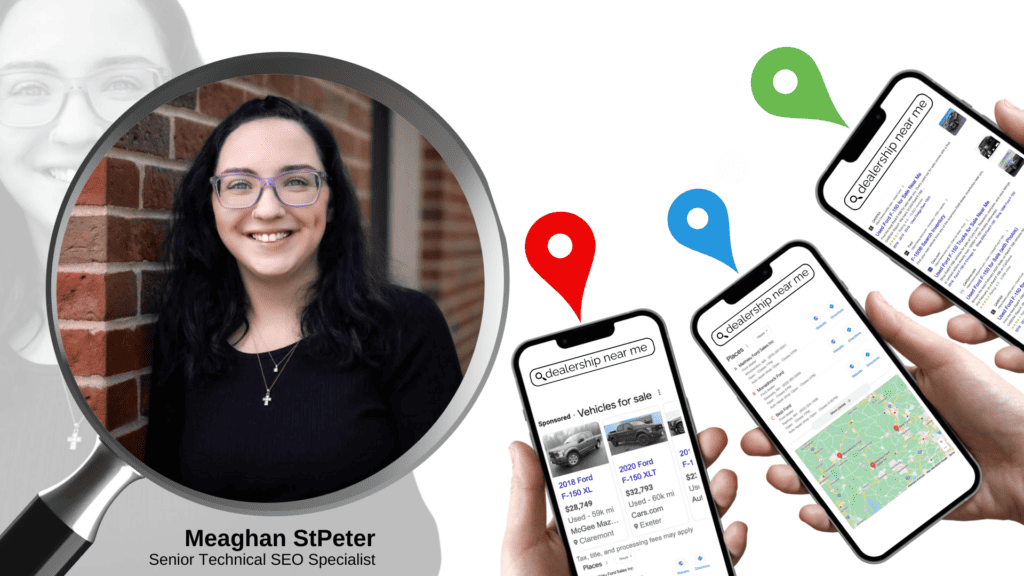
The world of auto dealership marketing often surrounds the search engine results page (SERP). This is inevitable as most people looking to purchase a car will perform some kind of Google search. However, the SERP is an intricate thing with many pieces to consider. In our recent video, What You Don’t Know About Search, Zach Billings, VP of Performance and Sales here at Wikimotive, reviewed these intricacies and how all the pieces fit together. If you missed it, you really should check it out. In the meantime, here’s a quick rundown of the different sections on a SERP and how you should optimize for each.
First Up: Paid Results
The first section of a SERP will consist of paid results. These spots are exactly what they sound like; they’re spots businesses have paid for and continue to pay to be in. When it comes down to it, this is rented space. Businesses are bidding against one another to hold their spot in the paid results. And while these spaces are an important part of digital marketing strategies, they are not the end-all-be-all. Despite being in the top spots, paid results typically only get 5-8% of total clicks from a query across the board. This means that if your paid result is one of three, you’re now only getting a fraction of that already small percentage.
You may be wondering why that is; if a result pops up first, wouldn’t the consumers’ instinct be to just click on it? The answer is no. In today’s day and age, many consumers notice the “Ad” label on these results and scroll past them to the organic results. Whether they’re doing this consciously or not, it seems they want to reach the results people have earned, not just rented out; they want to find the highest quality results. Keeping this all in mind, when push comes to shove, it doesn’t make a lot of sense to throw your entire marketing budget at paid search when it isn’t going to return the favor with high click-through rates.
As Zach mentioned in the What You Don’t Know About Search video, this instinct to scroll past paid results sometimes changes. For example, Vehicle Ads results, which are also paid results, do have a higher click-through rate. This is likely because users are looking directly at a product they may purchase rather than just a URL.
All in all, paid search results are far from having the highest click-through or conversion rate, but they are an essential part of your marketing strategy. It’s truly all about finding the right balance.
Second in Line: The Map Pack
The second thing you will see on many automotive-focused SERPs is the Map Pack. I discussed this last month, as we’ve seen quite a bit of Map Pack volatility over the past year. Not all SERPs will have Map Pack results. That said, it’s safe to assume that this section will be on SERPs for “dealer” or “near me” searches. Within the Map Pack, you’ll see a list of Google Business Profiles (GBPs) or “Google listings.” These are being displayed because Google thinks the businesses they represent will best serve the consumer based on the intent of their search. For example, if someone is in Cincinnati and searches “Ford dealer near me,” the Map Pack listings would be Ford dealerships in and around Cincinnati.
These results are especially helpful to consumers, as they allow them to access a dealership’s offerings, phone number, website, and even reviews all in one place. The Map Pack captures an average of 35% of all SERP clicks, which is pretty evenly distributed among the three featured results. That is not an insignificant percentage, meaning optimizing your GBP is pretty important. But again, you can’t put all your eggs in one basket, especially not this one, as Map Packs frequently come and go, making them unreliable for consistent traffic. And that’s where the organic results come into play.
Finally, the Spots You Earn: Organic Results
The organic results are presented after the paid results and map pack on the SERP. While paid results are rented and Map Pack results are granted, but often volatile, organic results are earned and owned. The section of organic results, which captures over 55% of all SERP clicks (and about 90% on SERPs without a map pack), is compiled of results that Google has deemed the most relevant and helpful based on the search query. That is why we continue to state that automotive SEO is essential.
Through intricate SEO strategies, you can build your dealership’s authority in the eyes of Google and rank well for the keywords that matter most to you. The higher you rank, the more of that 55-90% of SERP clicks you’ll receive. And this will continue to hold true without having to repeatedly outbid other businesses like you with paid search. Again, organic spots are earned and owned, holding value over time, even when the economy gets tough.
Finding a Balance With Your Dealership’s Marketing Efforts
Building effective paid search campaigns, optimizing your GBP, and crafting an SEO strategy are all essential to your dealership’s marketing efforts. That said, it’s important to know the value of each asset so that you can delegate time and effort accordingly. With the right automotive marketing partner, you can find balance among these things and divide your eggs into various baskets, making them count.
Here at Wikimotive, we’re committed to helping dealers find balance. So, whether you have questions about where to put your efforts or how to execute a meaningful strategy, we have your back. Contact us today to learn more about how we can help you succeed on the SERP.